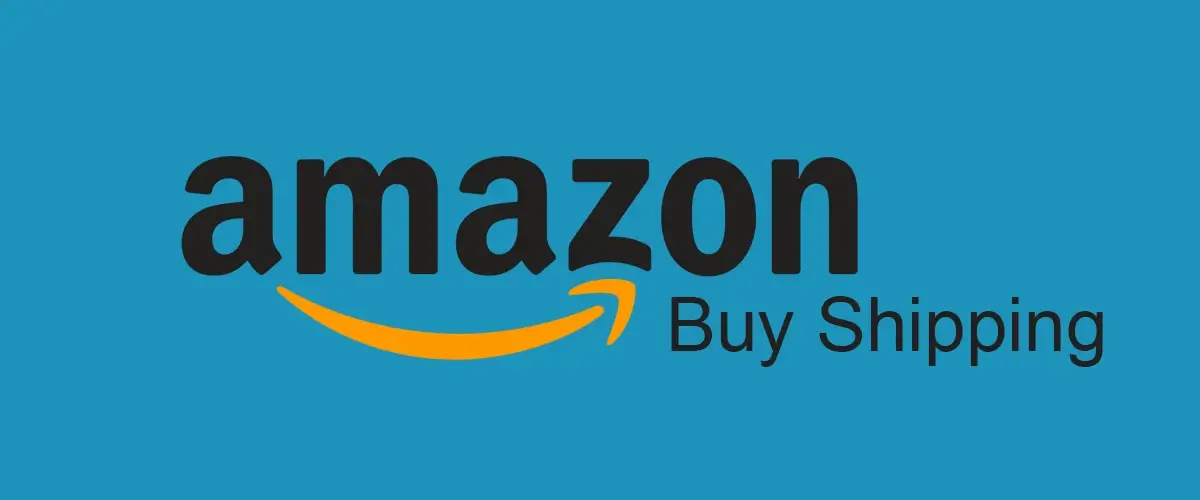Dropshipping
Originally published on July 29, 2019 by Logiwa Marketing, Updated on October 26, 2023
Dropshipping: a risky get-rich-quick scheme or genius business model?
In 2018, a writer for The Atlantic chronicled his disappointing encounter with a too-good-to-be-true clothing brand.
He’d been looking for a camel-colored coat, but had only been able to find rather pricey ones. One day, he came across an ad on Instagram for such a coat at a fraction of the usual cost. He hit buy, waited for it to arrive, and then opened the package – sent by China Post – to find a coat that was an outrageously low-quality version of what he viewed online.
Contents
- What Exactly Is Dropship?
- How Dropshipping Lowered Entry Costs for Retailers
- What Are The Advantages and Disadvantages of Dropshipping?
- Big Brands Using the Dropship Model
- A Step-by-Step of How Small Businesses Employ Dropship
- Dropshipping Is An Opportunity to Start Your Business, Not a Get-Rich-Quick Scheme
A buying experience like this is only possible due to dropship: a product of the intersecting worlds of digital marketing and ecommerce. Today, anyone with a high-speed internet connection can ship products they’ve never seen or used, from suppliers they’ve never met, through a brand that’s less than a day old.
Some have even built entire businesses off of teaching other people how to make thousands of dollars through dropshipping – oftentimes when their own dropship business is failing to see a profit.
Stories like the camel-colored coat tale lead people to wonder if dropshipping is nothing more than a scam. In theory, dropshipping sounds like a genius “get-rich-quick” scheme. In practice, it’s a legitimate supply chain management strategy that requires a little more work to do correctly, especially if you actually care about your customers.
In this article, we’ll outline what dropship is, how it’s implemented successfully, and detail some of the shady practices currently giving dropshipping a bad name.
What Exactly Is Dropship?
Traditionally, retailers operated like this: They would purchase goods from a warehouse or wholesaler, stock it in their inventory, and sell it to customers. This business model relies on making a profit on the difference between the wholesale price (bulk and cheap) and the retail price (individual and marked up).
This model comes with some risks and responsibilities for the retailer, specifically:
- Managing inventory and absorbing the carrying costs
- Acquiring wholesale inventory and selling enough of it to earn a return on investment
Managing Inventory and Absorbing The Carrying Costs
A decent chunk of change goes into managing inventory. For starters, you need workers to organize and count inventory, which raises warehouse labor costs. You also needed supervisors for the people who manage inventory, and need to train a diverse inventory team since changing up the stock counters is one good way to limit theft. This further increases labor costs.
Even if you have upstanding employees, you still have to absorb the cost of lost or damaged items. Then, there’s also the cost of insuring your inventory, the cost of the space for storing the inventory, the additional heating and lighting costs, and more.
As a business owner, you also have to invest mental energy into your inventory management processes. One of the key inventory management activities is maintaining the balance of having just enough inventory at the right time.
If you have too much inventory, you’re raising your carrying costs and also increasing the likelihood of spoilage or obsolescence (something any restaurant owner or consumer electronics retailer understands).
If you have too little inventory, you run the risk of stockouts. This reduces revenue and erodes customer loyalty, which affects recurring business.
Acquiring Wholesale Inventory and Selling It At Retail Prices
You know what they say: It costs money to make money. Retailers understand this more than anybody. If you want to buy at wholesale and sell at retail, you need money to acquire enough inventory to fulfill your orders.
Once you have the inventory, there’s the risk of being unable to sell at full retail price or even having to take a loss on some items, which can negatively impact your bottom line. In the past, this was a considerable barrier to entry, which brings us back to back to dropship.
How Dropshipping Lowered Entry Costs for Retailers
Once you understand the traditional pain points of retailing and inventory management, it’s easy to see why the dropship method, fueled by inexpensive online advertising opportunities, took off like a rocket. Simply speaking, dropship works like this:
- A brand or retailer chooses a selection of wholesalers (or, in some cases, other retailers)
- A brand or retailer creates an online catalog of products – without any inventory
- This online catalog of products, usually presented through ecommerce platforms like Shopify, is marketed to potential customers using digital channels like Google, Facebook, and Instagram
- A customer places an order through the retailer’s online store
- The retailer orders the customer’s order from the wholesaler and enters the customer’s address as the delivery address
- The wholesaler sends the product to the customer
Ultimately, the retailer is a middleman connecting consumers to products they may not have otherwise seen.
What Are The Advantages and Disadvantages of Dropshipping?
Dropshipping presents a number of advantages and disadvantages. Let’s start with the positives.
The Advantages of Dropshipping
On the consumer side, dropship makes new products available to consumers — it amplifies the global marketplace. These could be products consumers in a particular market may have never seen. If there’s a fantastic clothing brand in South Korea, consumers in the U.S. can buy items from the line.
On the retailer side, dropship virtually eliminates inventory costs. While there are still other costs of doing business, like online ads and subscription fees for an ecommerce platform, these costs are significantly lower than purchasing an entire collection of inventory and managing it.
That said, there are a few downsides…
The Disadvantages of Dropshipping
On the consumer side, dropshipping opens up the possibility of being on the receiving end of false advertising. A retailer may put up a nice image – sometimes a stock image -enticing the buyer to purchase this amazingly cheap find. When the product arrives, it’s a mere shadow of what was advertised.
On the retailer side, there’s significant risk when working with vendors you’ve neither met nor vetted. A warehouse likely won’t care about your customers as much as you do, so there isn’t as much urgency when it comes to shipping products on time or delivering excellent customer service.
Delayed shipping is one of the most common reasons dropshipping businesses fail. With consumers conditioned by Amazon to expect products within a matter of days and at low shipping costs, the thought of waiting weeks for a shipment from China is simply unacceptable.
On top of that, since retailers have a very limited relationship with their suppliers, it’s difficult to obtain the information needed to provide status updates to their customers.
Big Brands Using the Dropship Model
It’s easy to dismiss dropship as the exclusive domain of social media influencers and stay-at-home parents trying to build an online company. In reality, many large brands have used dropship to grow their business.
Companies like Macy’s and Home Depot were early adopters of the dropshipping model. Why? Well, big-box brands have (rightfully) been concerned about losing market share to ecommerce companies. One strategy they’ve embraced is using dropshipping to expand their collection of available to sales goods.
For example, rather than stocking every color of one sweater in the store, they can stock only the most popular colors and make the rest available through dropship.
Large, experienced players still face risks with the dropshipping model. One of the risk factors for big companies is brand reputation. Shipping and order status updates come from the retailer’s name, so, if a warehouse ships a product late, the customer’s frustration is directed at the retailer.
Additionally, direct shipping gives warehouses access to consumer data, turning them into competitors rather than retail partners. In fact, many warehouses are leveraging consumer data to adopt a direct-to-consumer model and ditch retailers altogether.
Don’t Let Your Inventory Become a Liability: Poor inventory accuracy leads to a host of issues that cut into your margins. Learn how Logiwa integrates all your sales channels and provides real-time inventory tracking.
A Step-by-Step of How Small Businesses Employ Dropship
While there are many companies using dropship to take advantage of consumers (by marketing products that look nothing like what the customer receives), there are some who use dropship as an honest supply chain strategy. Below, we’ve outlined a step-by-step guide on how to run your dropship business.
Find Your Specialty Space
Dropshipping works best when you have a niche and you’re connecting consumers to products they otherwise wouldn’t find. If you’re simply selling lipstick at hyperinflated prices, then you’re probably in dropshipping for the wrong reasons.
When picking a niche, choose one with enough demand to generate business. Google Trends is one way to gauge consumer interest in a particular area over time. In addition, choose a space that you’re actually interested in so that you remain motivated.
Set Up Your Ecommerce Platform
Once you’ve chosen a niche, you’ll need to set up a website. Shopify is a popular choice for both beginner and expert retailers. Making ecommerce easy is the company’s bread and butter. You’ll need to design an enticing website that encourages consumers to browse. Remember: Your entire role in this ecosystem is to be the go-to middleman, so you’ll need to look impressive.
Once you’ve set up a website and designed it, it’s time to add products.
Add Products To Your Retail Site
Once you’ve chosen products for your site, you can either add them manually or use apps like Oberlo (which Shopify acquired) to automatically link to products on sites like AliExpress.
AliExpress has become a popular way to find suppliers, but there are a few things retailers should keep in mind when using sites like AliExpress for their dropship business:
- Write compelling copy for your product descriptions. Since you aren’t actually manufacturing or storing these products, your storefront is your competitive advantage. Write copy that tells a story and entices potential customers to buy. That said, be honest in your product descriptions. While marketing is all about persuasion, lying about the quality of your product is a sure way to erode consumer trust.
- Be honest about delivery times. Dropshipped items from China can take up to a month to reach your customers. Be up-front about your shipping times. Most consumers expect speedy delivery, and they won’t automatically understand that you’re using a dropship business model, so unexpected, long wait times could lead to frustrated buyers.
- Offer order tracking: If your buyers accept long shipping times, they’ll want status updates. Instead of manually responding to endless requests for status updates, consider integrating an order tracking app like the one Shopify offers its users.
Another word of advice to aspiring dropshippers is to avoid selling brand name products. These companies have relationships with retailers who are licensed resellers. Selling their products when you don’t have an existing agreement could lead to legal trouble.
Initiate Orders With Your Supplier
Let’s say someone places an order for a trench coat on your website. To fulfill this order, you’ll need to enter the customer’s information into the supplier’s site (e.g., AliExpress) so that the supplier can ship the product directly to the customer.
You can either do this manually yourself, outsource the work to others, or use apps like Oberlo to do this automatically.
One big benefit to using an app like Oberlo is that it’ll let you know if key supplier details have changed, including the price or the available stock. This will help you avoid situations where a customer orders a product only to learn later than the item is unavailable.
How To Handle Returns And Refunds
Most suppliers on AliExpress don’t offer returns or refunds. Since customers purchased through your storefront, they’ll be taking their concerns to you, not to the supplier. Dropshipping companies faced with requests for refunds or returns can take one of these two recommended approaches:
- Check with the supplier on AliExpress to see if they are one of the suppliers that offer a refund. If it’s a matter of a delayed product, try checking on the status of the shipment to salvage the sale.
- Offering a refund because the product quality is poor. If a customer receives a product that doesn’t match up to what was advertised, it may be worth cutting your losses and offering a refund in order to preserve your credibility. Afterward, assess the vendor and consider removing them from your supplier list.
If you want to grow your business, building customer trust is essential. As consumers become more educated on the dropshipping model, they’ll be more wary about who they buy from. You want to be one of the quality storefronts that stands out from the crowd.
Dropshipping Is An Opportunity to Start Your Business, Not a Get-Rich-Quick Scheme
One of the positive things about dropshipping is that it offers an entry point for people who don’t have the capital to start a traditional retail store. That said, dropshipping should be used as an opportunity to grow a viable business, not a get-rich-quick scheme that takes advantage of consumers through deceptive online ads.
By assessing your vendors, ending relationships with bad vendors, and putting the customer first, you can build a dropshipping business that offers interesting products at competitive prices.
Run a digital fulfillment network and grow your DTC business–without additional headcount
Inventory Management
Improve your inventory across your supply chain.





